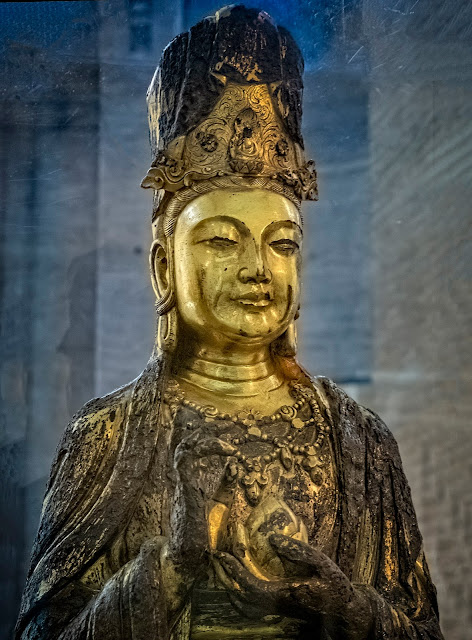Chinese and Japanese art at the Penn Museum in Philadelphia
Yesterday I finished editing and uploading my images of the University of Pennsylvania Museum of Archaeology and Anthropology (Penn Museum)'s Chinese and Japanese Art on display in their Asian galleries to Wikimedia Commons. These are high resolution images suitable for both print and digital applications and I only require attribution for their use. The Penn Museum's Asian collection ranges from bronze vessels of the Zhou Period (1046-256 BCE) to sculptures of the Qing Dynasty (1644 to 1912 CE). Most objects on display at the time of my visit in 2015 are related to Buddhism in some form.
https://commons.wikimedia.org/wiki/Category:Asian_art_in_the_University_of_Pennsylvania_Museum_of_Archaeology_and_Anthropology
I'm now working on my images of their ancient Egyptian collection and will begin uploading those soon. Most of my images of their spectacular objects from ancient Mesopotamia including the death pit of Ur have been uploaded from my Flickr account by another Wikipedia editor:
https://commons.wikimedia.org/wiki/Category:Middle_Eastern_antiquities_in_the_University_of_Pennsylvania_Museum
A small sampling of the Penn Museum's Asian Art:
 |
| Female Guardian Lioness Cloisonne 17th century CE Qing Dynasty possibly from Beijing China |
 |
| Lokapala Tang Dynasty 618-907 CE Henan Province China. A lokapala is a warrior, or one of the four Heavenly Kings who guard the four directions of the universe. |
 |
| Unglazed pottery funerary figurines of horses Tang Dynasty (618-907 CE) China |
 |
| Sakyamuni Buddha Dry Lacquer Yuan Dynasty (1271-1368 CE) China |
 |
| Silver death mask of the Liao Dynasty (907-1124 CE) Shanxi Province China |
 |
| Monju, the bodhisattva of wisdom's lion from a Shingon Temple altar Japan late 19th century CE |
 |
| Bodhisattva Guanyin recovered from a river near Mukden Manchuria in 1918. A small figure of Amitabha Buddha appears at the base of the high crown headdress. Liao China 10th century CE |
 |
| Wooden figure of Guanyin from the Song Period (960-1279 CE) China |
 |
| Wooden Seitaka attendant of Fudo from Koyasan Temple, Kyoto Japan 19th century CE |
 |
| Wooden Kangara attendant of Fudo from Koyasan Temple, Kyoto, Japan 19th century CE |
 |
| Zen Buddhist figure of a seated Patriarch or Monk 18-19th century Japan |




Comments
Post a Comment